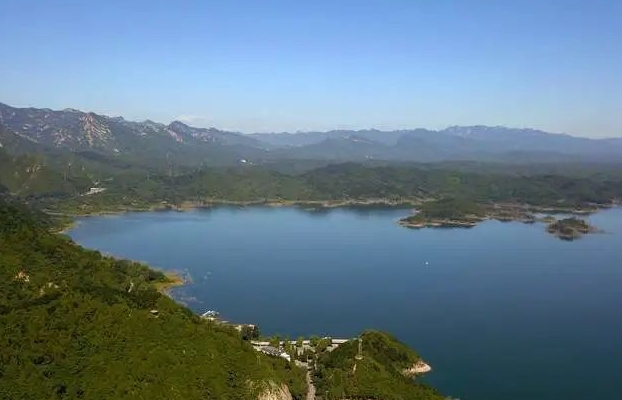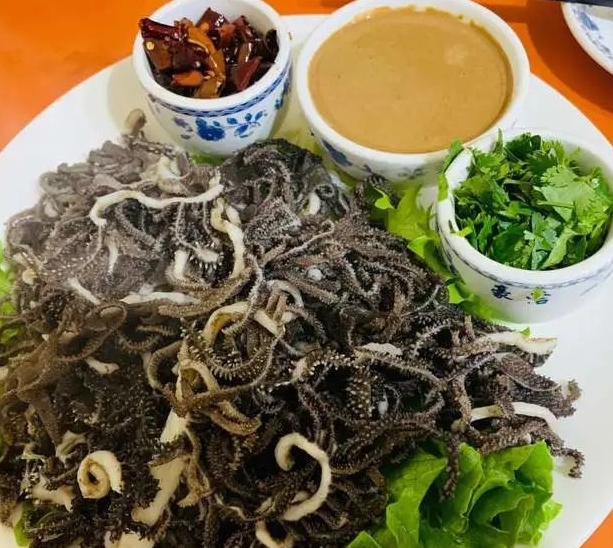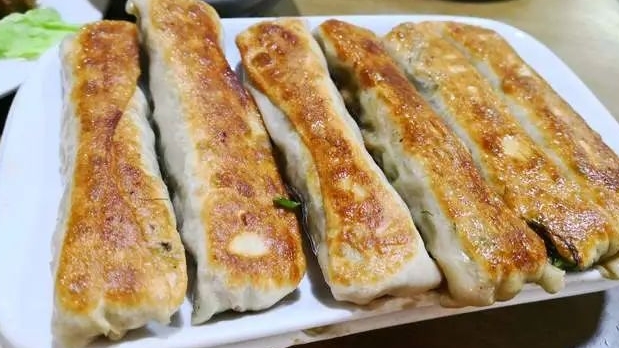Beijing, abbreviated as “Jing” and historically known as Yanjing or Beiping, is the capital city, a municipality, a national central city, and a megacity of the People’s Republic of China. It serves as China’s political, cultural, international exchange, and technological innovation center, as approved by the State Council. Beijing is renowned as one of China’s historical and cultural cities and is recognized globally as a leading international city. As of October 2023, Beijing comprises 16 districts, covering an area of 16,410.54 square kilometers, with a permanent population of approximately 21.86 million by the end of 2023.
Located in northern China on the northern edge of the North China Plain, Beijing borders Tianjin to the east and is otherwise surrounded by Hebei Province. The city center is situated at 116°20′ E longitude and 39°56′ N latitude, with its terrain higher in the northwest and lower in the southeast. Beijing is encircled by mountains to the west, north, and northeast, while the southeastern part slopes gently towards the Bohai Sea. Major rivers flowing through Beijing include the Yongding River, Chaobai River, North Canal, and Juma River. The city experiences a warm temperate, semi-humid, semi-arid monsoon climate with hot, rainy summers and cold, dry winters, while spring and autumn are brief.
Beijing is home to the headquarters of the Communist Party of China, the Central People’s Government, and the Standing Committee of the National People’s Congress. The city has hosted both the Summer and Winter Olympic Games, making it the world’s first “Dual Olympic City.” Additionally, Beijing is one of the birthplaces of Chinese civilization and stands as a globally recognized ancient capital and modern international metropolis. It preserves and showcases a vast array of traditional Chinese cultural heritage, with numerous historical sites and cultural landmarks, making it the city with the most UNESCO World Heritage sites worldwide.
| Information Category | Specific Content |
|---|---|
| Chinese Name | Beijing City |
| English Name | Beijing, Peking |
| Aliases | Beiping, Yanjing, Ji, Youzhou |
| Administrative Division Code | 110000 |
| Administrative Region Category | Municipality directly under the Central Government |
| Region | People’s Republic of China |
| Geographical Location | In North China and northern part of the North China Plain |
| Area | 16,410 square kilometers |
| Subordinate Regions | 16 municipal districts |
| Government Residence | No. 57, Yunhe East Street, Tongzhou District |
| Telephone Area Code | 010 |
| Postal Code | 100000 |
| Climate | Warm-temperate semi-humid and semi-arid monsoon climate |
| Population | 21.858 million (by the end of 2023) |
| Famous Scenic Spots | Tiananmen Square, the Forbidden City in Beijing, Yuanmingyuan, the Summer Palace, Badaling Great Wall, Ming Tombs, Mutianyu Great Wall, Temple of Heaven Park, Peking Man Site at Zhoukoudian, Fangshan Global Geopark in China, Prince Gong’s Mansion, Beihai Park, Gubei Water Town, Olympic Park, Miyun Reservoir, Sanlitun, Grand Canal Forest Park, Xinhua Gate, Baiwang Mountain, Juyongguan Great Wall. |
| Airports | Beijing Capital International Airport, Beijing Daxing International Airport |
| Railway Stations | Beijing Railway Station, Beijing East Railway Station, Beijing South Railway Station, Beijing West Railway Station, Beijing North Railway Station, Beijing Chaoyang Railway Station, Daxing Airport Railway Station, Beijing Daxing Railway Station, Qinghe Railway Station, Beijing City Sub-center Railway Station, Beijing Fengtai Railway Station. |
| License Plate Codes | From Jing A to Jing Q and Jing Y. |
| Regional GDP | 4,376.07 billion yuan (in 2023) |
| Current Leaders | Yin Li (secretary of the Party Committee), Yin Yong (mayor). |
I. Historical Evolution of Beijing
Ancient Period:
In the early Western Zhou Dynasty, King Wu of Zhou enfeoffed Duke Shao in Yan (whose capital was in Liulihe Town, Fangshan District). He enfeoffed a descendant of the Yellow Emperor in Ji (now southwest of Beijing). Later, Yan destroyed Ji and moved its capital to Ji. Collectively, they were called Yandu or Yanjing.
In the Qin Dynasty, Guangyang Prefecture, Ji County, etc. were established. In the Western Han Dynasty, Guangyang Prefecture had changes. In the Eastern Han Dynasty, some prefectures had adjustments. From the Wei State in the Three Kingdoms period to the Northern Zhou Dynasty, relevant prefectures and kingdoms had changes.
In the Sui Dynasty, Yuyang Prefecture was abolished, and Youzhou was renamed Zhuojun. In the Tang Dynasty, Zhuojun was renamed many times. After Liu Rengong established a local regime in the Five Dynasties, it was destroyed.
In the Liao Dynasty, Youzhou was promoted to Nanjing (Yanjing). In the Jin Dynasty, the capital was moved to Yanjing and renamed Zhongdu. In the Yuan Dynasty, it was renamed Daxing Prefecture under Zhongdu Road and later changed to Dadu Road, becoming the national transportation center and capital.
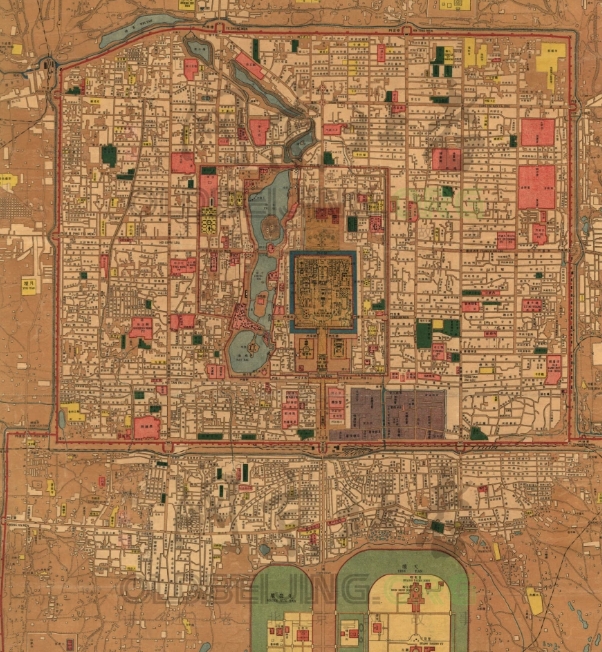
1914 old Beijing map.
Ming and Qing Dynasties:
In the first year of Hongwu in the Ming Dynasty, Beiping Prefecture was established. Later, Zhu Di changed Beiping to Beijing. After moving the capital, it was called the capital. Shuntian Prefecture led prefectures and counties. During the Ming and Qing Dynasties, Shuntian Prefecture governed the capital area. After the Qing soldiers entered the pass, Beijing was called the capital Shuntian Prefecture.
In the Kangxi period of the Qing Dynasty, four circuit magistrates were set up. During the Qianlong period, the prefectures and counties under the jurisdiction of Shuntian Prefecture had changes. During the Guangxu period, the divisions of the inner and outer cities of Beijing were adjusted.
Modern and Contemporary Period:
In the first year of the Republic of China, after the Republic of China established its capital in Nanjing and then moved the capital to Beijing, it was called Shuntian Prefecture. Later, it was changed to the Capital Region. New tram systems and cultural and educational institutions were built. After the Northern Expedition, the capital was moved back to Nanjing, and Beijing was renamed Beiping Special Municipality and Beiping City. During the War of Resistance Against Japanese Aggression, Beiping was occupied by Japan and renamed Beijing. After the victory of the War of Resistance Against Japanese Aggression, it was renamed Beiping again.
In January 1949, Beijing was liberated peacefully. In September, Beiping was renamed Beijing. On October 1, the Central People’s Government of the People’s Republic of China was established in Beijing.
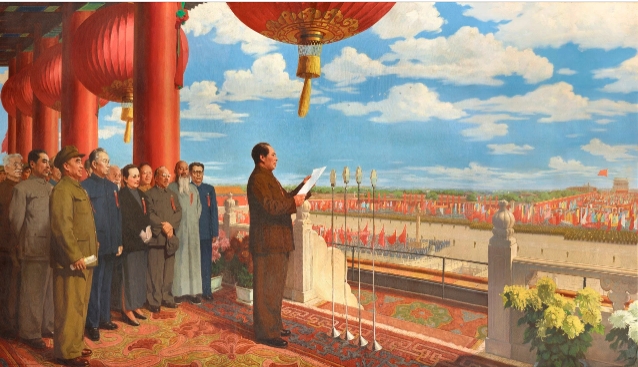
The founding ceremony of the People’s Republic of China (oil painting).
II. Administrative Divisions
Beijing has a total of 16 municipal districts under its jurisdiction, namely Dongcheng District, Xicheng District, Chaoyang District, Fengtai District, Shijingshan District, Haidian District, Shunyi District, Tongzhou District, Daxing District, Fangshan District, Mentougou District, Changping District, Pinggu District, Miyun District, Huairou District, and Yanqing District. The People’s Government of Beijing is located at No. 57, Yunhe East Street, Tongzhou District.
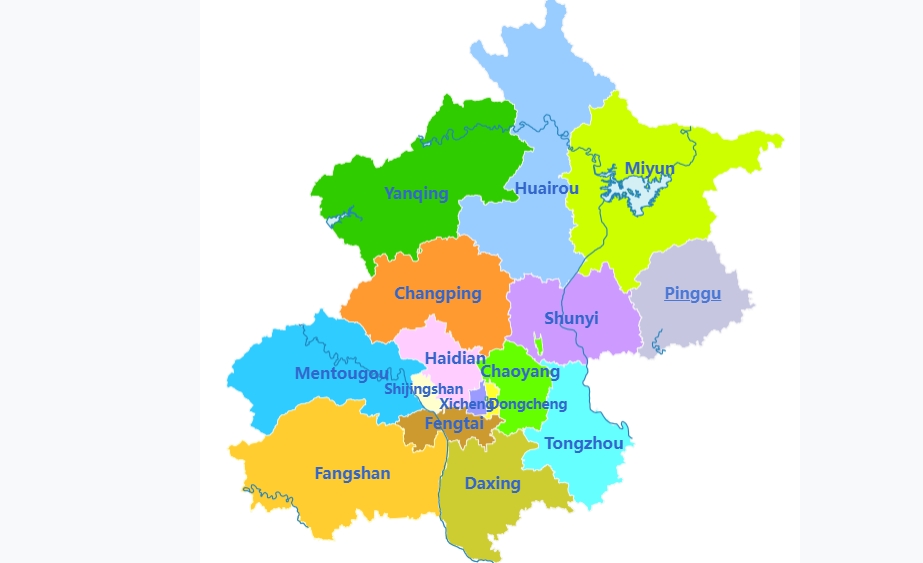
| District | Area (km²) | Government Residence | Subordinate Areas |
|---|---|---|---|
| Dongcheng District | 41.84 | Jingshan Sub-district | Donghuamen Sub-district, Jingshan Sub-district, Jiaodaokou Sub-district, Andingmen Sub-district, Beixinqiao Sub-district, Dongsi Sub-district, Chaoyangmen Sub-district, Jianguomen Sub-district, Dongzhimen Sub-district, Hepingli Sub-district, Qianmen Sub-district, Chongwenmenwai Sub-district, Donghuashi Sub-district, Longtan Sub-district, Tiyuguanlu Sub-district, Tiantan Sub-district, Yongdingmenwai Sub-district. |
| Xicheng District | 50.7 | Financial Street Sub-district | Xichang’an Street Sub-district, Xinjiekou Sub-district, Yuetan Sub-district, Zhanlanlu Sub-district, Desheng Sub-district, Financial Street Sub-district, Shichahai Sub-district, Dazhalan Sub-district, Tianqiao Sub-district, Chunshu Sub-district, Taoranting Sub-district, Guang’anmennei Sub-district, Niujie Sub-district, Baizhifang Sub-district, Guang’anmenwai Sub-district. |
| Chaoyang District | 470.8 | Chaowai Sub-district | Jianwai Sub-district, Chaowai Sub-district, Hujialou Sub-district, Sanlitun Sub-district, Zuojiazhuang Sub-district, Xiangheyuan Sub-district, Hepingjie Sub-district, Anzhen Sub-district, Yayuncun Sub-district, Xiaoguan Sub-district, Jiuxianqiao Sub-district, Maidian Sub-district, Tuanjiehu Sub-district, Liulitun Sub-district, Balizhuang Sub-district, Shuangjing Sub-district, Jinsong Sub-district, Panjiayuan Sub-district, Fatou Sub-district, Nanmofang Township (area), Gaobeidian Township (area), Jiangtai Township (area), Taiyanggong Township (area), Datun Sub-district, Wangjing Sub-district, Xiaohongmen Township (area), Shibalidian Township (area), Pingfang Township (area), Dongfeng Township (area), Aoyuncun Sub-district, Laiguangying Township (area), Changying Hui Township (area), Sanjianfang Township (area), Guanzhuang Township (area), Jinzhan Township (area), Sunhe Township (area), Cuigezhuang Township (area), Dongba Township (area), Heizhuanghu Township (area), Dougezhuang Township (area), Wangsiying Township (area), Donghu Sub-district, Capital Airport Sub-district. |
| Fengtai District | 304 | Fengtai Sub-district | You’anmen Sub-district, Taipingqiao Sub-district, Xiluoyuan Sub-district, Dahongmen Sub-district, Nanyuan Sub-district, Donggaodi Sub-district, Dongtieying Sub-district, Liuliqiao Sub-district, Fengtai Sub-district, Xincun Sub-district, Changxindian Sub-district, Yungang Sub-district, Fangzhuang Sub-district, Wanping Sub-district, Majiabao Sub-district, Heyi Sub-district, Lugouqiao Sub-district, Huaxiang Sub-district, Chengshengsi Sub-district, Shiliuozhuang Sub-district, Yuquanying Sub-district, Kandian Sub-district, Wuliidian Sub-district, Qingta Sub-district, Beigong Town, Wangzuo Town. |
| Shijingshan District | 85.74 | Lugu Sub-district | Babao Mountain Sub-district, Laoshan Sub-district, Bajiao Sub-district, Gucheng Sub-district, Apple Garden Sub-district, Jinding Street Sub-district, Guangning Sub-district, Wuliutuo Sub-district, Lugu Sub-district. |
| Haidian District | 431 | Haidian Sub-district | Wanshoulu Sub-district, Yongdinglu Sub-district, Yangfangdian Sub-district, Ganjiakou Sub-district, Balizhuang Sub-district, Zizhuyuan Sub-district, Beixiaguan Sub-district, Beitaiyangzhuang Sub-district, Xueyuanlu Sub-district, Zhongguancun Sub-district, Haidian Sub-district, Qinglongqiao Sub-district, Tsinghuayuan Sub-district, Yanyuan Sub-district, Xiangshan Sub-district, Qinghe Sub-district, Huayuanlu Sub-district, Xisanqi Sub-district, Malianwa Sub-district, Tiancunlu Sub-district, Shangdi Sub-district, Wanliu Area, Dongsheng Township (area), Shuguang Sub-district, Wenquan Town (area), Sijiqing Town (area), Northwest Wang Town (area), Sujiatuo Town (area), Shangzhuang Town (area). |
| Shunyi District | 1021 | Victory Sub-district | Victory Sub-district, Guangming Sub-district, Renhe Town (area), Houshayu Town (area), Tianzhu Town (area), Yang Town, Niulanshan Town (area), Nanfaxin Town (area), Mapo Town (area), Shiyuan Sub-district, Konggang Sub-district, Shuangfeng Sub-district, Wangquan Sub-district, Gaoliying Town, Liqiao Town, Lishu Town, Nancai Town, Beiwu Town, Dasungezhuang Town, Zhang Town, Longwantun Town, Mulin Town, Beixiaoying Town, Beishicao Town, Zhaoquanying Town. |
| Tongzhou District | 906 | Luyuan Sub-district | Zhongcang Sub-district, Xinhua Sub-district, Beiyuan Sub-district, Yuqiao Sub-district, Luyuan Sub-district, Tongyun Sub-district, Wenjing Sub-district, Jiukeshu Sub-district, Linheli Sub-district, Yangzhuang Sub-district, Luyi Sub-district, Songzhuang Town, Zhangjiawan Town, Huoxian Town, Majuqiao Town, Xiji Town, Taihu Town, Yongledian Town, Lucheng Town, Yongsheng Town, Liyuan Town, Yujiawu Hui Township. |
| Daxing District | 1036 | Xingfeng Sub-district | Xingfeng Sub-district, Linxiaolu Sub-district, Qingyuan Sub-district, Yizhuang Town (area), Huangcun Town (area), Jiugong Town (area), Xihongmen Town (area), Yinghai Town (area), Guanyinsi Sub-district, Tiantongyuan Sub-district, Gaomidian Sub-district, Ronghua Sub-district, Boxing Sub-district, Qingyundian Town, Caiyu Town, Anding Town, Lixian Town, Yufa Town, Panggezhuang Town, Beizangcun Town, Weishanzhuang Town, Zhangziying Town. |
| Fangshan District | 2019 | Gongchen Sub-district | Chengguan Sub-district, Xinzhen Sub-district, Xiangyang Sub-district, Dongfeng Sub-district, Yingfeng Sub-district, Xingcheng Sub-district, Liangxiang Town (area), Zhoukoudian Town (area), Liulihe Town (area), Gongchen Sub-district, Xilu Sub-district, Yancun Town, Doudian Town, Shilou Town, Changyang Town, Hebei Town, Changgou Town, Dashiyu Town, Zhangfang Town, Shidu Town, Qinglonghu Town, Hancunhe Town, Xiayunling Township, Nanjiao Township, Fozizhuang Township, Daanshan Township, Shijaying Township, Puwai Township. |
| Mentougou District | 1451 | Dayu Sub-district | Dayu Sub-district, Chengzi Sub-district, Dongxinfang Sub-district, Datai Sub-district, Wangping Town (area), Yongding Town (area), Longquan Town (area), Tanzhesi Town, Junzhuang Town, Yanchi Town, Zhaitang Town, Qingshui Town, Miaofengshan Town. |
| Changping District | 1344 | Chengbei Sub-district | Chengbei Sub-district, Nankou Town (area), Machikou Town (area), Shahe Town (area), Chengnan Sub-district, Dongxiaokou Town (area), Tiantongyuan North Sub-district, Tiantongyuan South Sub-district, Huoying Sub-district, Huilongguan Sub-district, Longzeyuan Sub-district, Shigang Sub-district, Yangfang Town, Xiaotangshan Town, Nanshao Town, Cuicun Town, Baishan Town, Beiqijia Town, Xingshou Town, Liucun Town, Shisanling Town, Yanshou Town. |
| Pinggu District | 948.24 | Binhe Sub-district | Binhe Sub-district, Xinggu Sub-district, Yuyang Area, Yukou Town (area), Mafang Town (area), Jinhaihu Town (area), Donggaocun Town, Shandongzhuang Town, Nandulehe Town, Dahuashan Town, Xiagezhuang Town, Machangying Town, Wangxinzhuang Town, Daxingzhuang Town, Liudian Town, Zhenluoying Town, Huangsongyu Township, Xiong’erzhai Township. |
| Miyun District | 2229 | Gulou Sub-district | Gulou Sub-district, Guoyuan Sub-district, Tanying Manchu and Mongolian Township, Miyun Town, Xiwengzhuang Town, Xitiangezhuang Town, Shilibao Town, Henanzhai Town, Jugezhuang Town, Mujiayu Town, Taishitun Town, Gaoling Town, Bulaotun Town, Fengjiayu Town, Gubeikou Town, Dachengzi Town, Dongshaoqu Town, Beizhuang Town, Xinchengzi Town, Shicheng Town. |
| Huairou District | 2123 | Longshan Sub-district | Quanhe Sub-district, Longshan Sub-district, Huairou Town (area), Yanqi Town (area), Miaocheng Town (area), Beifang Town, Yangsong Town, Qiaozi Town, Huaibei Town, Tanghekou Town, Bohai Town, Jiuduhe Town, Liulimiao Town, Baoshan Town, Changshaoying Manchu Township, Labagoumen Manchu Township. |
| Yanqing District | 1994 | Rulin Sub-district | Baiquan Sub-district, Xiangshuiyuan Sub-district, Rulin Sub-district, Yanqing Town, Kangzhuang Town, Badaling Town, Yongning Town, Jiuxian Town, Zhangshanying Town, Sihai Town, Qianjiadian Town, Shenjiaying Town, Dayushu Town, Jingzhuang Town, Dazhuangke Township, Liubinbao Township, Xiangying Township, Zhenzhuquan Township. |
III.
Location and Territory
Topography and Geomorphology
Climate
IV. Transportation
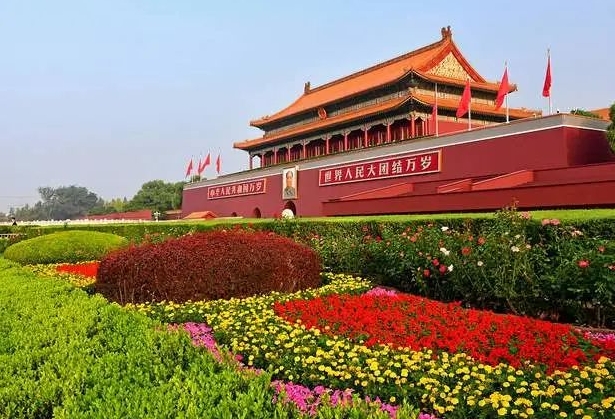
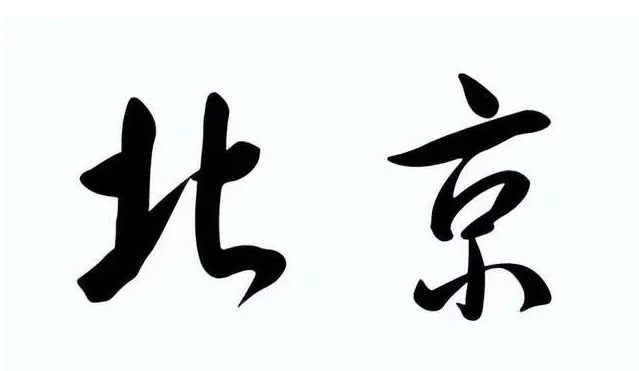
Beijing
